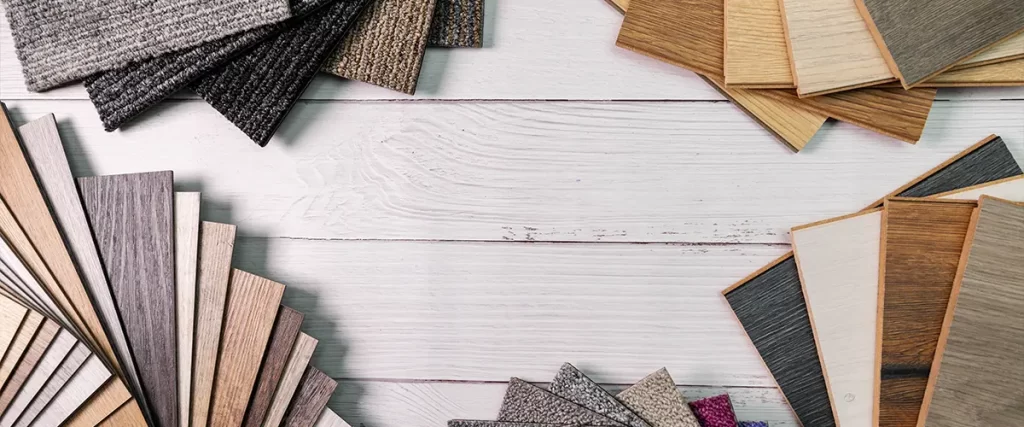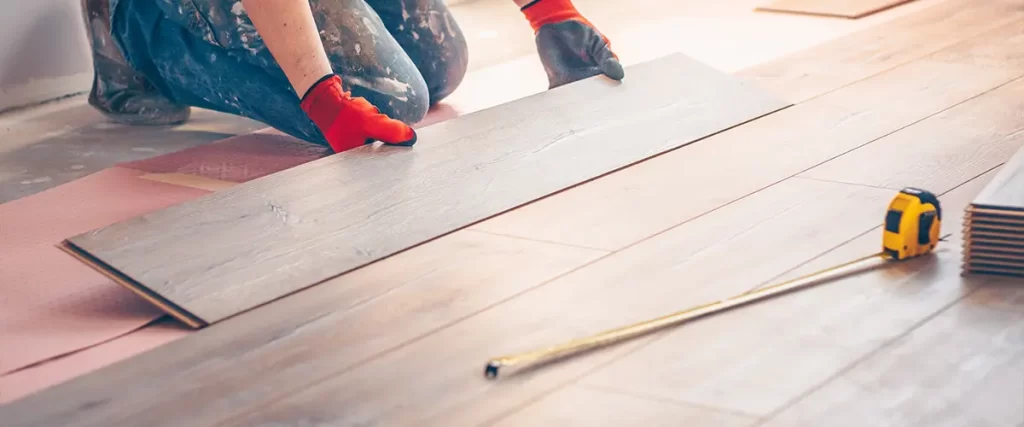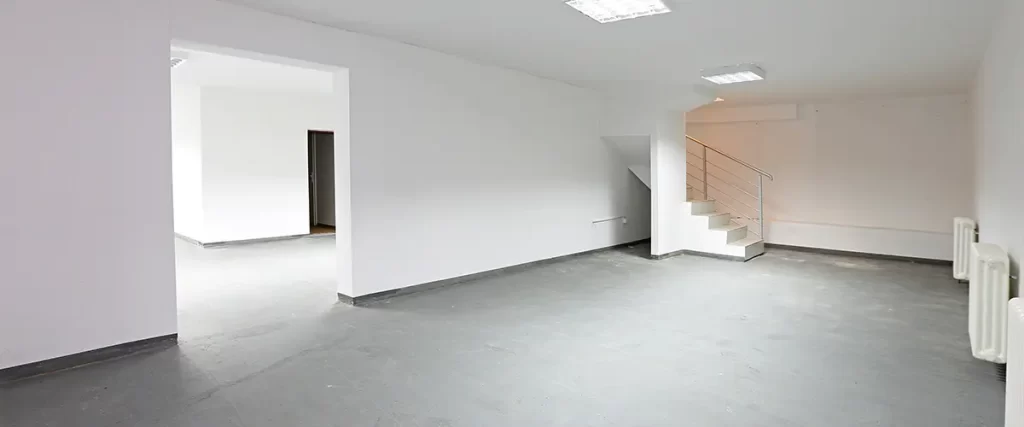Let’s talk about unfinished basements. They’re often overlooked, but with the right flooring, they can become so much more than just storage space. Whether you’re dreaming of a cozy family room, a game zone, or just a cleaner, more functional basement, choosing the right flooring is a big deal.
And don’t worry—it doesn’t have to be complicated. Let’s break it down and explore the best flooring for your unfinished basement.

Why Flooring Matters in an Unfinished Basement
Before we dive into the options, let’s chat about why flooring is important. Unfinished basements have unique challenges—moisture, cold temperatures, and durability needs. Picking the right flooring can help with:
- Moisture Protection: Basements are notorious for being damp. Choosing water-resistant flooring can prevent mold, mildew, and damage.
- Comfort: Concrete floors can feel cold and hard. Adding the right flooring makes your space more inviting and comfortable.
- Aesthetic Appeal: Even an unfinished basement can look polished and clean with the right flooring.
- Durability: Basements often take a beating, so your flooring needs to stand up to wear and tear.
Now that we’ve covered the “why,” let’s move on to the “what.”
Top Flooring Options for Unfinished Basements
Here are some of the best choices for basement flooring, with their pros and cons.
1. Concrete Floors (Polished or Painted)
Concrete is the go-to option for many unfinished basements because, well, it’s already there! You can leave it as-is or give it a makeover with polish or paint.
- Why It Works: It’s durable, cost-effective, and handles moisture like a pro.
- Pros: Easy to clean, no risk of water damage, and endless design options with paint or stains.
- Cons: Can feel cold and hard underfoot.
2. Vinyl Flooring
Vinyl is a superstar when it comes to basement floors. It’s affordable, water-resistant, and comes in a ton of styles, including wood-look or stone-look options.
- Why It Works: Perfect for high-moisture areas and available in sheets, tiles, or planks.
- Pros: Comfortable, durable, and low-maintenance.
- Cons: Some cheaper options might not look as realistic as natural materials.
3. Rubber Flooring
Rubber flooring might not be the first thing you think of, but it’s amazing for basements, especially if you want to turn yours into a gym or playroom.
- Why It Works: It’s water-resistant, cushioned, and super durable.
- Pros: Absorbs impact, reduces noise, and is easy to install.
- Cons: Limited style options—might not suit all tastes.
4. Laminate Flooring
Laminate is a budget-friendly way to give your basement a polished look. While it’s not waterproof, some varieties are water-resistant, making them a viable option for drier basements.
- Why It Works: Gives the look of hardwood without the cost or maintenance.
- Pros: Affordable, scratch-resistant, and available in many designs.
- Cons: Not ideal for very damp basements; may warp if exposed to water.
5. Carpet Tiles
Carpet tiles are a flexible option for unfinished basements. They’re easy to install and replace, making them perfect for spaces that might see spills or wear.
- Why It Works: Adds warmth and comfort to cold, hard floors.
- Pros: Soft underfoot, great for soundproofing, and available in various colors and patterns.
- Cons: Not the best choice for damp basements without a proper moisture barrier.
6. Epoxy Coating
Epoxy coating is a fantastic way to upgrade your concrete floors. It’s not technically a “flooring material,” but it provides a smooth, durable surface.
- Why It Works: Protects against moisture and gives a sleek, polished finish.
- Pros: Long-lasting, easy to clean, and water-resistant.
- Cons: Requires professional installation for the best results.
7. Engineered Wood
If you love the look of hardwood, engineered wood can be a good alternative for your basement. It’s more resistant to moisture than solid wood.
- Why It Works: Combines the beauty of hardwood with better durability for basement environments.
- Pros: Stylish, sturdy, and less likely to warp.
- Cons: More expensive than some other options and still not fully waterproof.
8. Peel-and-Stick Vinyl Tiles
If you’re looking for an affordable and easy-to-install solution, peel-and-stick vinyl tiles are worth considering. These tiles come in a variety of patterns and colors, so you can create a stylish look without breaking the bank.
Why It Works: It’s quick to install and requires no special tools. Plus, it’s easy to replace individual tiles if they get damaged.
Pros: Budget-friendly, water-resistant, and great for DIYers.
Cons: Not as durable as other options, and it may not hold up well under heavy traffic.
9. Cork Flooring
Cork flooring is another unique option for basements. While it’s less common, cork has a lot of great qualities that make it appealing for certain uses.
Why It Works: Cork is naturally resistant to mold and mildew, making it a great choice for slightly damp spaces. It also has a soft, cushioned feel underfoot.
Pros: Eco-friendly, sound-absorbing, and comfortable.
Cons: Prone to scratches and dents, and it requires sealing to protect against moisture.
10. Stained Concrete
If you’re a fan of modern, industrial vibes, stained concrete might be your best bet. This option is low-maintenance and can be customized with different colors or finishes to match your style.
Why It Works: It’s incredibly durable and can handle the wear and tear of an active basement.
Pros: Inexpensive, water-resistant, and customizable.
Cons: Cold and hard underfoot, and it may develop cracks over time.

Things to Keep in Mind
No matter what flooring you choose, there are a few extra steps you might need to take to make sure your basement is ready:
- Moisture Barrier: This is a must if your basement is prone to dampness.
- Subflooring: Consider adding a subfloor to create a layer of insulation and prevent cold seeping through the floors.
- Drainage Check: Make sure your basement’s drainage system is working properly to avoid future water issues.
Combining Functionality with Style
Your unfinished basement doesn’t have to feel, well, unfinished. By thinking creatively, you can blend functionality and style to get the best of both worlds.
Add Rugs and Mats for Comfort
While many flooring options focus on durability and moisture resistance, you can easily soften the look and feel of your basement with rugs and mats. These can define specific areas of the space, like a cozy seating area or a workout zone.
Pro Tip: Opt for washable, moisture-resistant rugs for easy maintenance.
Try Layering Flooring Options
Sometimes, one type of flooring isn’t enough to meet all your needs. Consider layering multiple materials for a customized solution. For example:
- Use epoxy or polished concrete in a laundry area for durability.
- Add carpet tiles in a playroom for warmth and comfort.
- Install vinyl planks in a kitchenette for a wood-look finish that’s easy to clean.
Planning Your Basement’s Layout
Another important aspect to think about is the layout of your basement. Whether it’s one large open space or divided into rooms, the layout will impact your flooring choices.
Zoned Flooring Solutions
If you’re using your basement for multiple purposes, like a home office and a gym, consider using different types of flooring in each zone. This approach not only looks great but also helps you tailor the space to specific needs.
Maximize Natural Light
Basements are often short on natural light, so flooring choices can help brighten things up. Opt for light-colored flooring, such as neutral vinyl or painted concrete, to make the space feel more open and airy.
Prepping Your Basement for Flooring
Before you jump into installing your flooring, preparation is key. Here’s what you need to do to ensure your basement is ready:
1. Seal Cracks and Gaps
Check your concrete floor for cracks, holes, or uneven spots. Fill these areas with a sealant to create a smooth surface and prevent moisture from seeping through.
2. Check for Moisture
Use a moisture meter to check the humidity level of your basement floor. If you find excessive moisture, consider installing a vapor barrier or using a dehumidifier before laying down flooring.
3. Plan for Insulation
Adding insulation under your flooring not only keeps the space warmer but also helps reduce noise. Rigid foam insulation is a popular choice for basements.
4. Test the Space
Before committing to a flooring material, try out a small sample in your basement. This allows you to see how it looks and feels in the actual environment.
More Tips for Basement Flooring Success
While choosing your flooring, here are some extra tips to make sure your basement renovation goes smoothly:
1. Think About Your Basement’s Purpose
What are you using the basement for? If it’s a kids’ playroom, carpet tiles or rubber might be ideal. For a home gym, rubber or vinyl flooring works well. If it’s a workspace, consider polished concrete or epoxy for durability.
2. Don’t Skimp on Quality
Even though a basement might not be the main focus of your home, it’s worth investing in quality flooring. Cheap options may seem tempting, but they often don’t hold up in a basement’s challenging environment.
3. Use Rugs to Add Warmth
Basements can feel cold, no matter the flooring. Area rugs or runners can bring in warmth and style. Plus, they’re easy to replace if damaged.
4. Choose Neutral Colors
For smaller or darker basements, light or neutral flooring colors can make the space feel bigger and brighter. If you want a cozy vibe, darker tones work well but ensure the room has good lighting.
5. Combine Flooring Types
If your basement serves multiple purposes, consider mixing flooring types. For example, use vinyl in a kitchenette area and carpet tiles in the seating area. This not only looks great but also serves practical purposes.
Common Flooring Mistakes to Avoid
Even with all the great options out there, some common mistakes can ruin a basement flooring project. Here’s what to watch out for:
- Skipping the Moisture Check
If you skip testing for moisture, your beautiful new floor could warp or get damaged quickly. Always check for dampness and address any issues first. - Not Leveling the Floor
An uneven floor can make installation harder and lead to problems like creaking or gaps. Fill any cracks or dips before laying your floor. - Ignoring Basement Insulation
A cold, uninsulated floor is no fun to walk on, especially in the winter. Consider adding insulation under your flooring for comfort. - Choosing the Wrong Material
Not every flooring material is basement-friendly. Avoid solid hardwood and anything overly porous unless your basement is super dry. - Forgetting About Maintenance
Think about how much work you’re willing to put into keeping your floors clean and in good shape. Some options, like carpet tiles, are easier to maintain than others.
Creative Flooring Ideas for Your Basement
If you’re feeling adventurous, here are some creative flooring ideas:
- Painted Concrete: Add color and personality with paint or stencils on your concrete floor.
- Luxury Vinyl with Patterns: Use vinyl planks or tiles in unique patterns like herringbone or checkerboard for a stylish touch.
- DIY Epoxy Designs: Create swirls, metallic finishes, or even faux marble effects with epoxy.
- Mix-and-Match Materials: Combine wood-look tiles with concrete for a modern, industrial vibe.

FAQ About Basement Flooring
1. Can I use laminate flooring in a basement?
Yes, but choose water-resistant laminate and use a moisture barrier underneath.
2. How can I prevent mold in my basement flooring?
Ensure proper ventilation, address any leaks, and pick mold-resistant materials like vinyl or epoxy.
3. What’s the cheapest option for basement floors?
Painted concrete or peel-and-stick vinyl tiles are budget-friendly choices.
4. How often should I clean my basement floors?
It depends on the material, but a regular weekly sweep or mop should suffice. For carpet, consider vacuuming and deep cleaning every few months.
5. Should I hire professionals for basement flooring installation?
It depends on the complexity. While vinyl and carpet tiles are DIY-friendly, options like epoxy or tile often need a pro for the best results.
Trust Home Matters Construction for Your Basement Flooring
No matter what type of flooring you choose, the right installation can make all the difference. At Home Matters Construction, we specialize in helping homeowners transform their basements into functional, stylish spaces. From moisture-proof vinyl to durable epoxy, we’ll help you pick the perfect option for your needs.
Ready to upgrade your basement in Papillion, NE? Call us today at (402) 661-0910 to schedule a consultation and start your flooring transformation!
